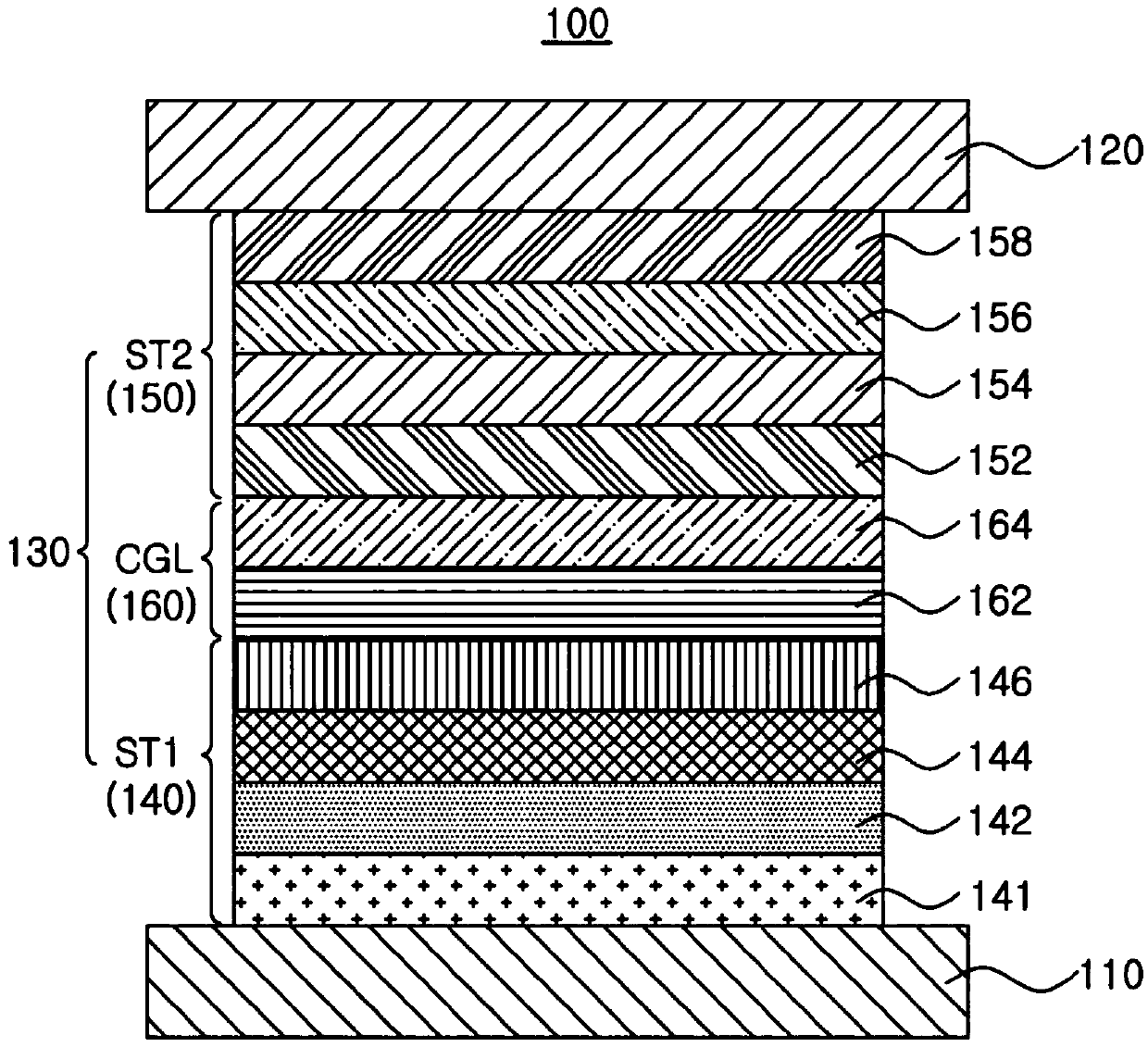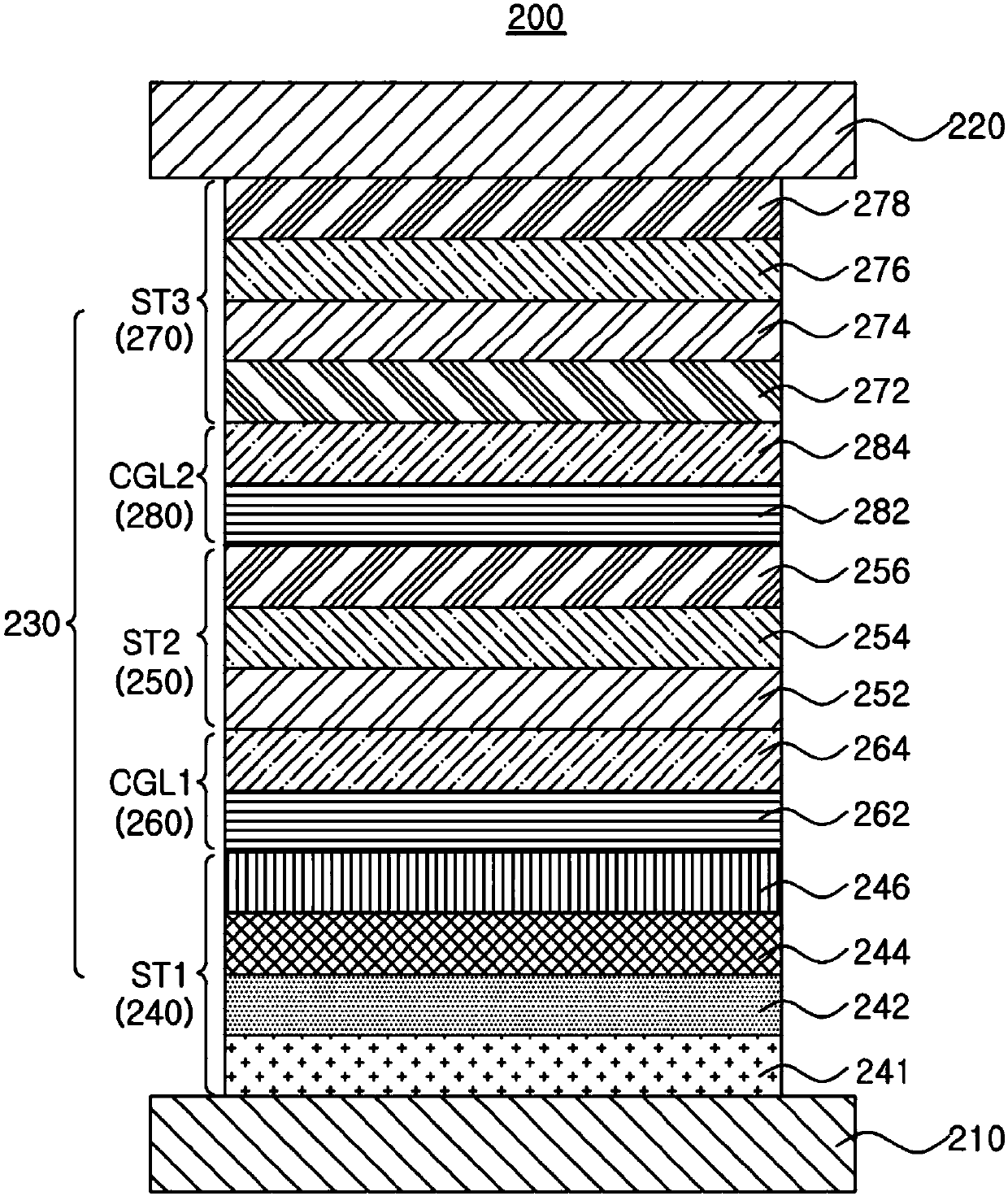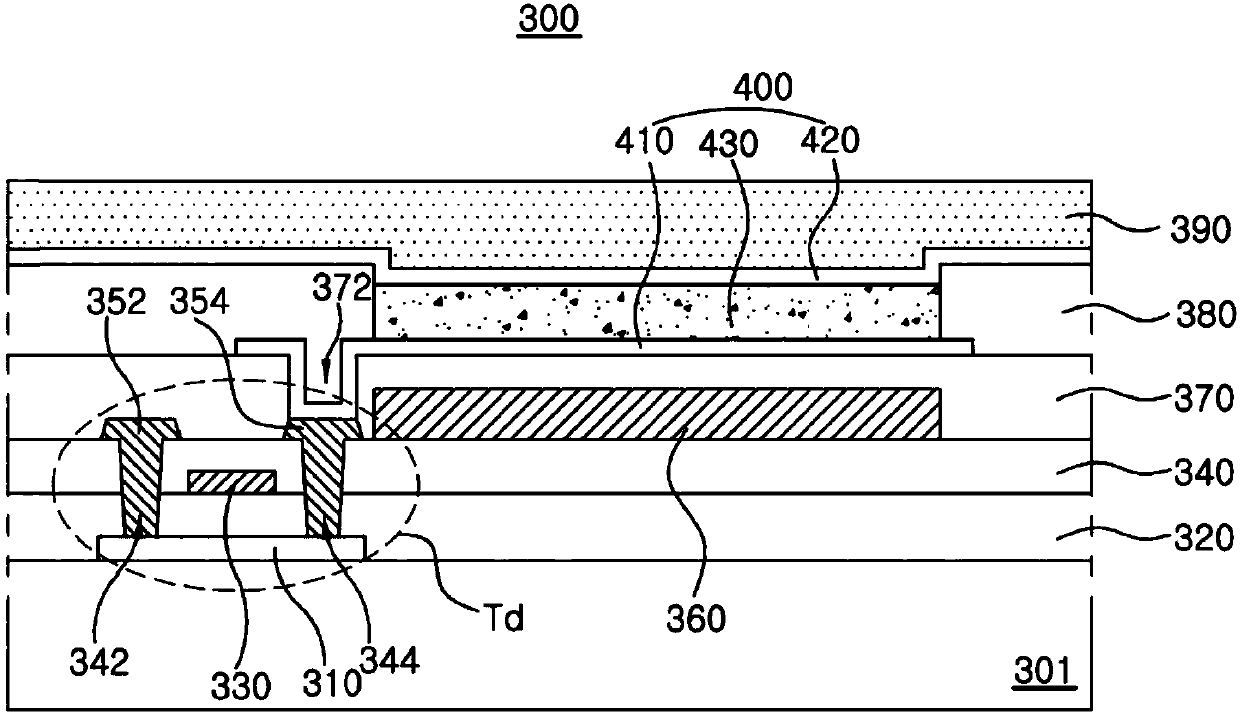Organic compound, light emitting diode including same and organic light emitting diode display
A technology of organic compounds and light-emitting diodes, applied in the direction of diodes, organic chemistry, electroluminescent light sources, etc., can solve the problems of reduced LED life, reduced injection efficiency, and deteriorated LED characteristics
- Summary
- Abstract
- Description
- Claims
- Application Information
AI Technical Summary
Problems solved by technology
Method used
Image
Examples
Synthetic example 1
[0154] Synthesis Example 1: Synthesis of Compound EN-016
[0155]
[0156] By adding 4,4,5,5-tetramethyl-2-(1-(phenanthrene-10-yl)naphthalene-4-yl)-1,3,2-dioxaborolane ( 6.0g, 13.94mmol), 2-bromo-9-phenyl-1,10-phenanthroline (4.20g, 12.57mmol), tetrakis-triphenylphosphine palladium (0) (Pd(PPh 3 ) 4 ) (0.50 g, 0.70 mmol), 4M potassium carbonate aqueous solution (10 mL), toluene 30 mL, and ethanol (EtOH) 10 mL were dissolved to form a mixture, and the mixture was refluxed and stirred for 12 hours. After the reaction was complete, H was added to the mixture 2 O 50 mL, the mixture was stirred for 3 hours and vacuum filtered. After the mixture was separated by column chromatography using dichloromethane (MC) and n-hexane as eluents, the mixture was recrystallized using MC to obtain compound EN-016 (6.25 g, migration number 80.3%).
Synthetic example 2
[0160] Synthesis Example 2: Synthesis of Compound EN-145
[0161]
[0162] By adding 2-(4-(4,4,5,5-tetramethyl-1,3,2-dioxaborolan-2-yl)phenyl)-9-phenyl- 1,10-phenanthroline (5.0g, 10.91mmol), 4-(4-bromophenyl)-2,6-diphenylpyrimidine (4.80g, 12.40mmol), tetrakis-triphenylphosphine palladium (0)(Pd(PPh 3 ) 4 ) (0.63g, 0.55mmol), 4M potassium carbonate aqueous solution (10mL), toluene 30mL, ethanol (EtOH) 10mL were dissolved to form a mixture, the mixture was refluxed and stirred for 12 hours. After the reaction was complete, H was added to the mixture 2 O 50 mL, the mixture was stirred for 3 hours and vacuum filtered. After the mixture was separated by column chromatography using dichloromethane (MC) and n-hexane as eluents, the mixture was recrystallized using MC to obtain compound EN-145 (5.01 g, migration number 72.3%).
Synthetic example 3
[0166] Synthesis Example 3: Synthesis of Compound EN-160
[0167]
[0168] By adding 2-(1-(4,4,5,5-tetramethyl-1,3,2-dioxaborolan-2-yl)naphthalen-4-yl)-9- Phenyl-1,10-phenanthroline (5.5g, 10.82mmol), 4-(4-bromophenyl)-2,6-diphenylpyrimidine (4.50g, 11.63mmol), tetrakis-triphenyl Phosphine palladium (0) (Pd (PPh 3 ) 4 ) (0.63g, 0.54mmol), 4M potassium carbonate aqueous solution (10mL), toluene 30mL, ethanol (EtOH) 10mL were dissolved to form a mixture, the mixture was refluxed and stirred for 12 hours. After the reaction was complete, H was added to the mixture 2 O 50 mL, the mixture was stirred for 3 hours and vacuum filtered. After the mixture was separated by column chromatography using dichloromethane (MC) and n-hexane as eluents, the mixture was recrystallized using MC to obtain compound EN-160 (5.03 g, migration number 72.8%).
PUM
 Login to View More
Login to View More Abstract
Description
Claims
Application Information
 Login to View More
Login to View More - R&D
- Intellectual Property
- Life Sciences
- Materials
- Tech Scout
- Unparalleled Data Quality
- Higher Quality Content
- 60% Fewer Hallucinations
Browse by: Latest US Patents, China's latest patents, Technical Efficacy Thesaurus, Application Domain, Technology Topic, Popular Technical Reports.
© 2025 PatSnap. All rights reserved.Legal|Privacy policy|Modern Slavery Act Transparency Statement|Sitemap|About US| Contact US: help@patsnap.com



